



The Indian health insurance industry has often been at the receiving end of criticism in recent months, with policyholders voicing concerns over steep renewal premium hikes, claim rejections and partial payouts.
Meanwhile, the industry has been in talks with hospitals to operationalise its common cashless empanelment and ‘Cashless Everywhere’ initiatives.
In an exclusive interview with Moneycontrol, Bajaj Allianz General Insurance’s MD and CEO Tapan Singhel, who is also the Chairman of the General Insurance Council, shared the health insurers’ side of the story on rising premiums, which he attributed to the industry’s high combined ratio. He also underlined the need for fraud control measures as well as hospitals’ co-operation in ensuring that ‘Cashless everywhere’ and the government’s National Health Claims Exchange (NHCX) take off.
Edited excerpts:
What is your outlook for the industry and Bajaj Allianz this financial year?
Over the last 20 years, the industry has given a double-digit CAGR (compound annual growth rate), and if I look at the next 20 years, again, it will yield a double digit CAGR. This is possible because India's economy is growing. Growth looked a bit muted in 2024-25 because accounting norms changed and now the base effect will be in place. But overall, the fundamentals of the business remain the same. So, the aberration is the effect of change in accounting norms, which will prevail for around a year. That is why I am giving you a longer-term view.
How have things changed for Bajaj Allianz post the split with Allianz?
The company is like a living entity – when you are a child, you require parental support, but as you grow into an adult, you are on your own. Bajaj Allianz is one of the largest insurance companies in India with a customer base of over 15 crore. It has a solvency ratio of over 300 percent which means it does not require capital. We have not taken any capital from shareholders since 2008. I don't see the need for any capital infusion in the near future either. It is a diversified company with a massive distribution network. So I don't see any impact.
The insurance regulator IRDAI is nudging insurers to go public. Is there an IPO in the works?
Promoters are best placed to answer this question, as they are the ones who take these calls. From my perspective, the company does not require capital.
Also read: Faced with health insurance premium hikes and claim disputes? Here’s what policyholders can do
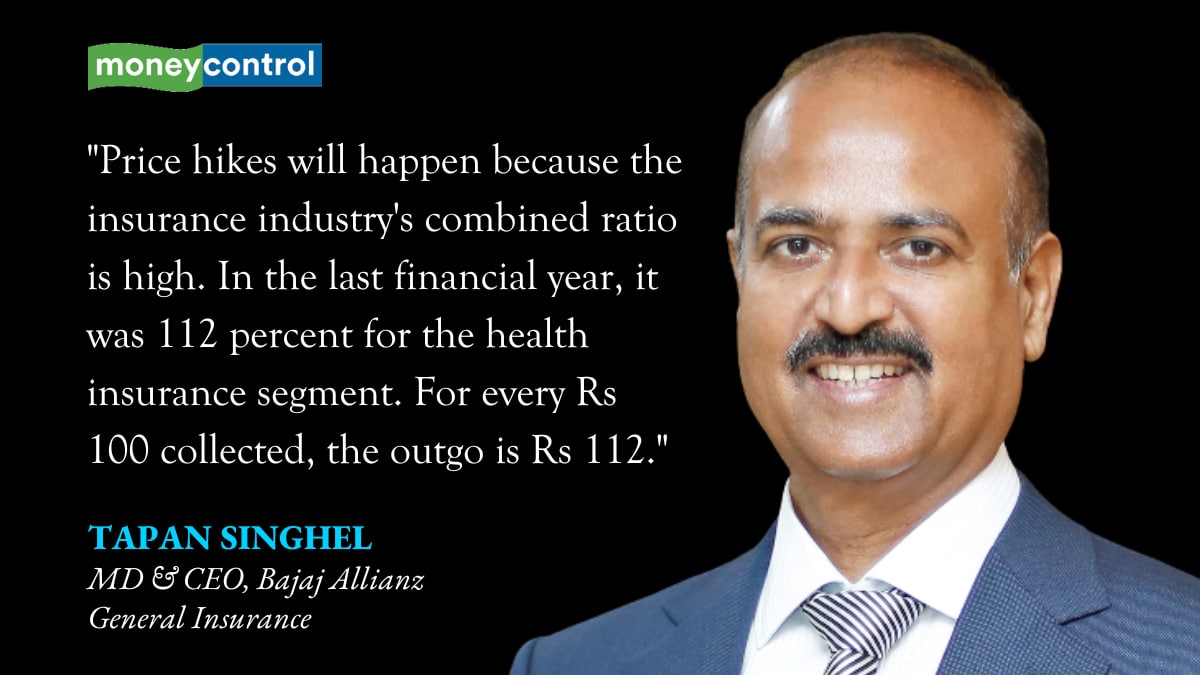
Coming to an issue that affects thousands of policyholders, many are complaining that on one hand, they are seeing steep premium hikes and on the other, there is dissatisfaction around claim settlement. The IRDAI, too, has reportedly flagged issues in claim settlement records of some companies. As the Chairman of the General Insurance Council, could you share your views on this criticism directed at the general insurance industry?
I always respect all kinds of criticism and feedback. This is what makes the company and the industry stronger. However, we need to look at the problem statement. Let's look at how the industry operates -- it collects money from many to pay to a few. An insurance company is a custodian of public money. So it has to ensure fraud prevention. Now, if the collected money falls short of delivery to customers in terms of claim payouts, then what will the industry do? It will have to collect more money.
Fundamentally, the price hike will happen since the combined ratio of the industry is high. If we look at the last financial year, the combined ratio for the health insurance segment was 112 percent -- so for every Rs 100 collected, the outgo is Rs 112. Now, let’s look at the Rs 100 collected. Now, 18 percent goes to the government. Next, let’s see how much the hospitals are getting out of it. The profits reported by the top 10 hospitals in the country were close to Rs 5,000 crore last year. The profit growth is 25 percent CAGR. So, is it justifiable to ask someone whose combined ratio is 112 percent to reduce premiums?
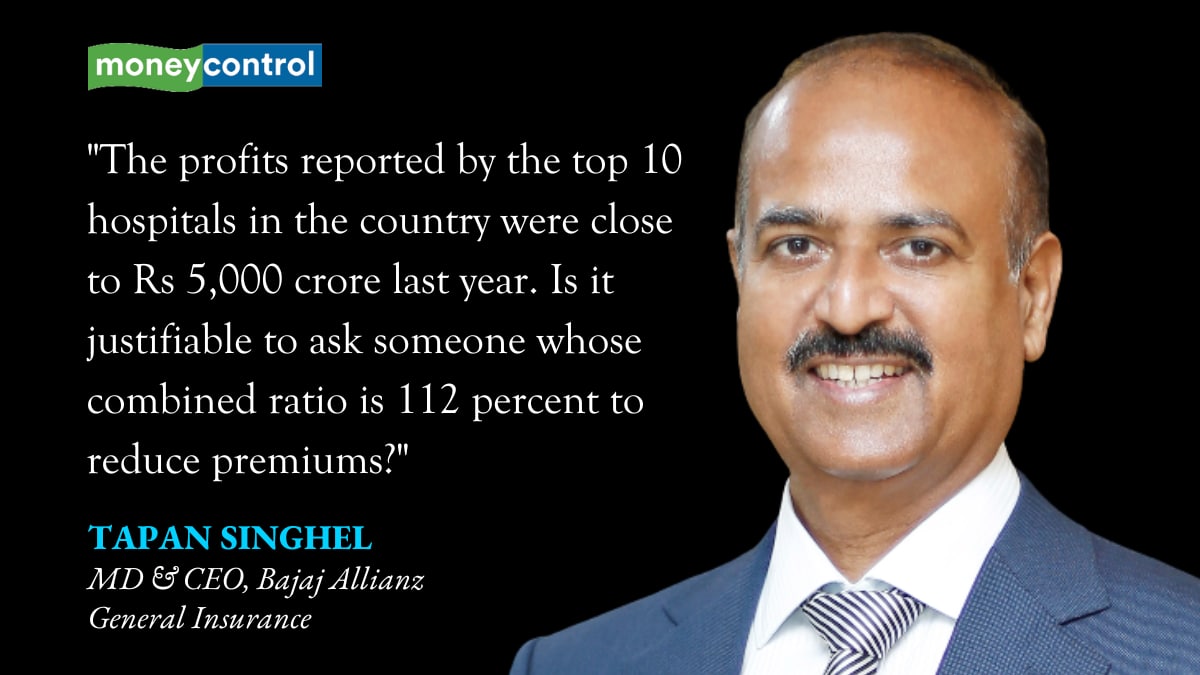
So what is the solution, because at the end of the day, it’s patient-policyholders who are affected?
We have been asking the government for a GST relaxation, but that has not happened so far. The demand for a healthcare regulator has not yet been granted. Moreover, the government’s own initiative – National Health Claims Exchange (NHCX) – has not moved forward, as hospitals are reluctant to come on board. The government asked all insurance companies and hospitals to join the platform, which the insurers did, but the hospitals have not co-operated. So the point I am trying to make is, when you write about customers’ interests, are you really putting out the right picture?
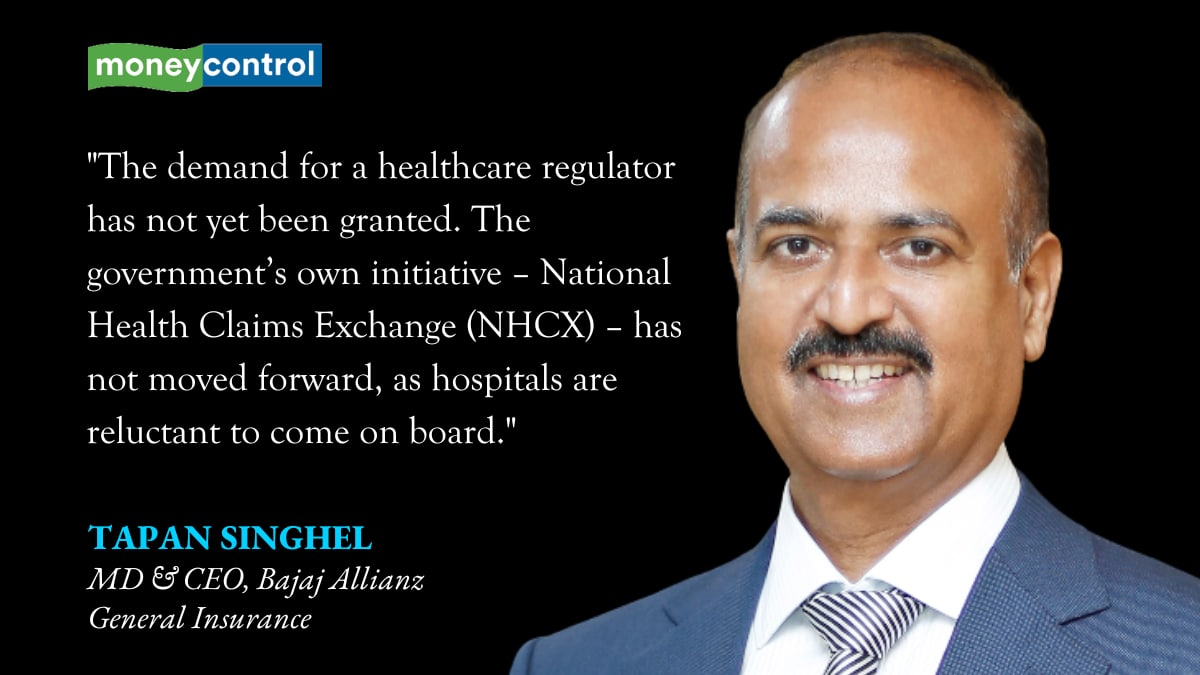
What are the challenges that you are facing when it comes to dealing with hospitals?
The Supreme Court had, in its order in February 2024, directed the central government to hold consultations with state governments and arrive at a consensus on determining a range for treatment rates at hospitals across the country. Standardisation of rates can ensure transparency in pricing. What happened after that? Has anything changed? No. However, I don’t see reports highlighting the fact that hospitals have not taken any steps on that front. Instead, we only read about insurance companies increasing premiums.
Is there any solution that the industry is working on to resolve customers’ issues via dialogues with IRDAI or the hospitals?
I am very happy that the IRDAI has said that insurance companies should come together for a common empanelment structure for hospitals. A team has been formed and it has started approaching hospitals. It is good for the hospitals, as a single form will ensure access to all health insurers. However, hospitals remain reluctant. We are in dialogue with them – it’s up to them to answer why they are hesitant.
How will common empanelment or cashless everywhere help policyholders?
Through these two initiatives, the endeavour is to ensure that whenever a customer walks into any hospital with any insurer’s policy, cashless facility will be made available. This will bring in transparency – whatever rates are quoted, the council will negotiate and reach an understanding on the charge structure. If we come across frauds by hospitals, that hospital will be out of the panel of all insurance companies, and thus, its business will be affected. This will act as a deterrent to frauds. It will help bring about standardisation in prices, some and fairness in the system. So, ultimately, the benefits will flow to policyholders in terms of better pricing and customer experience.
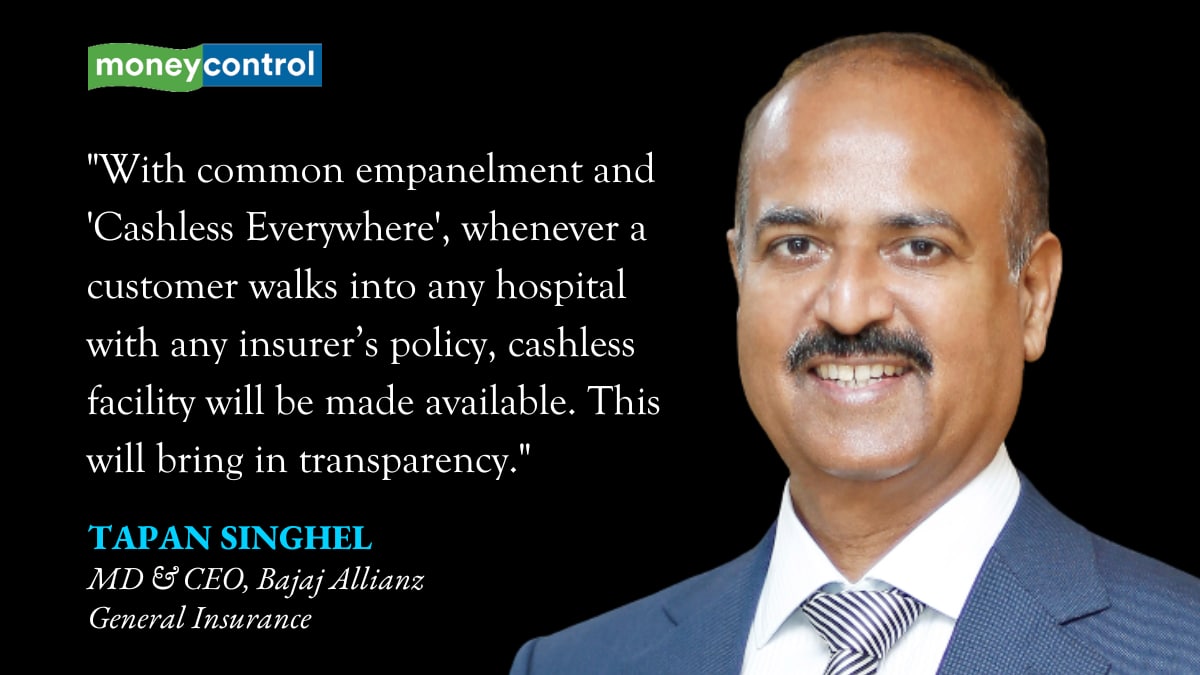
What is the status of GI Council’s ‘Cashless everywhere’ initiative rolled out two years ago?
From our side, it is fully operational, but not all hospitals are on board. So, the insurance industry has always demonstrated that it wants transparency, be it cashless everywhere or plugging into the NHCX, which is, in fact, a government initiative.
Hospitals, at their end, complain about queries on the line of treatment, delays in payouts, lack of clarity on deductions…
For the hospitals, the GI Council has set up a redressal committee, which is an independent body. Hospitals can reach out to that independent body whose decision is binding on all insurers. So, I am trying to bring in transparency, but I need support from the hospitals.
Recently, health insurance claimants have raised the issue of insurers hiring private investigators to scrutinise claims. It’s not a new practice, but has attracted a lot of attention of late..
The industry does not hire private investigators for every claim. Last year, the industry paid out 2.67 crore claims. Do you think they can hire investigators to investigate all these claims? At the same time, the truth is that the industry does face the challenge of frauds. Fraudulent claims by individuals, often in collaboration with hospitals, wrong billing by hospitals and so on. Insurers deal with public money, so it is their duty to investigate claims where there is suspicion. They have to identify frauds so that genuine customers do not suffer. It is possible that even some genuine claims could, at times, come under the radar of insurers’ fraud trigger mechanisms. These fraud triggers need to improve.
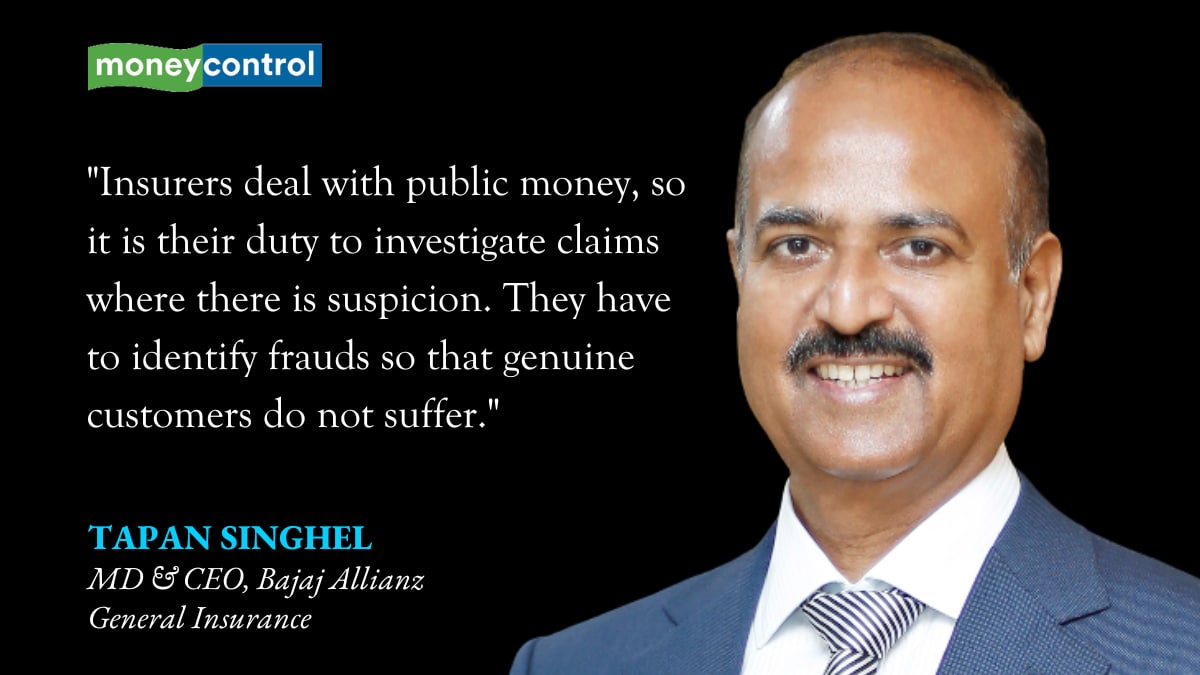
What should be the ideal GST rate for health insurance premiums?
For senior citizens, it should be zero, that’s my personal view. For the rest, it can be 12 percent – after all, it’s not a luxury product.
What are the key trends that are likely to emerge over the next five years in this sector?
Last year, the industry paid out Rs 80,000 crore in claims to hospitals. So, it is becoming a significant player in the healthcare sector. Earlier, hospitals could ignore health insurers and patient-policyholders’ concerns, but now a substantial amount of money is coming in through insurance. So, I see greater collaboration happening in the days to come, which will lead to greater transparency in the pricing of treatment procedures and other practices. Secondly, products will keep getting better. We will see innovations, better integration with healthcare, more holistic health solutions and so on. Double-digit growth in health insurance will continue, as over 30-40 crore Indians are not covered by any health insurance policy or government protection.
Discover the latest Business News, Sensex, and Nifty updates. Obtain Personal Finance insights, tax queries, and expert opinions on Moneycontrol or download the Moneycontrol App to stay updated!
Find the best of Al News in one place, specially curated for you every weekend.
Stay on top of the latest tech trends and biggest startup news.